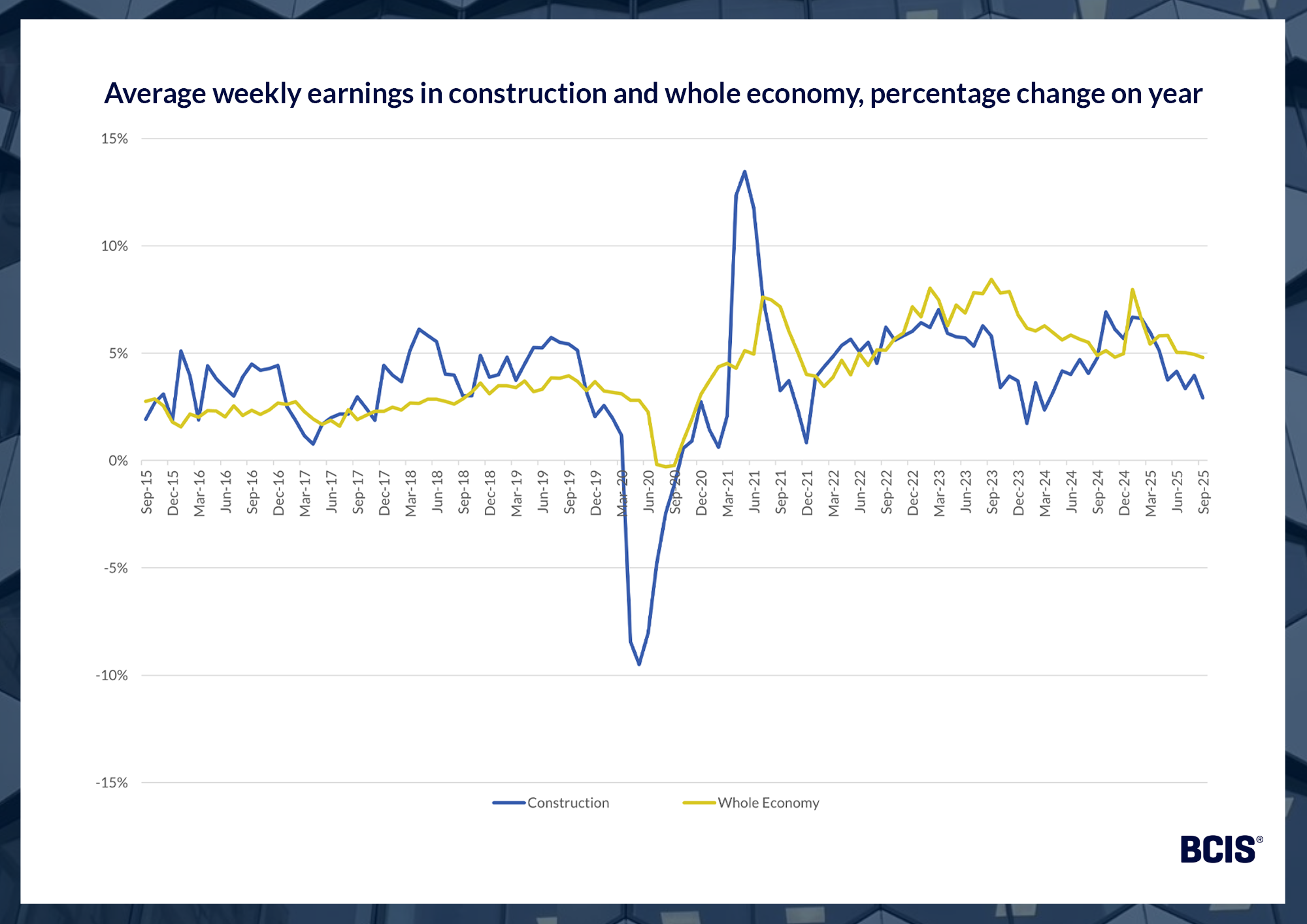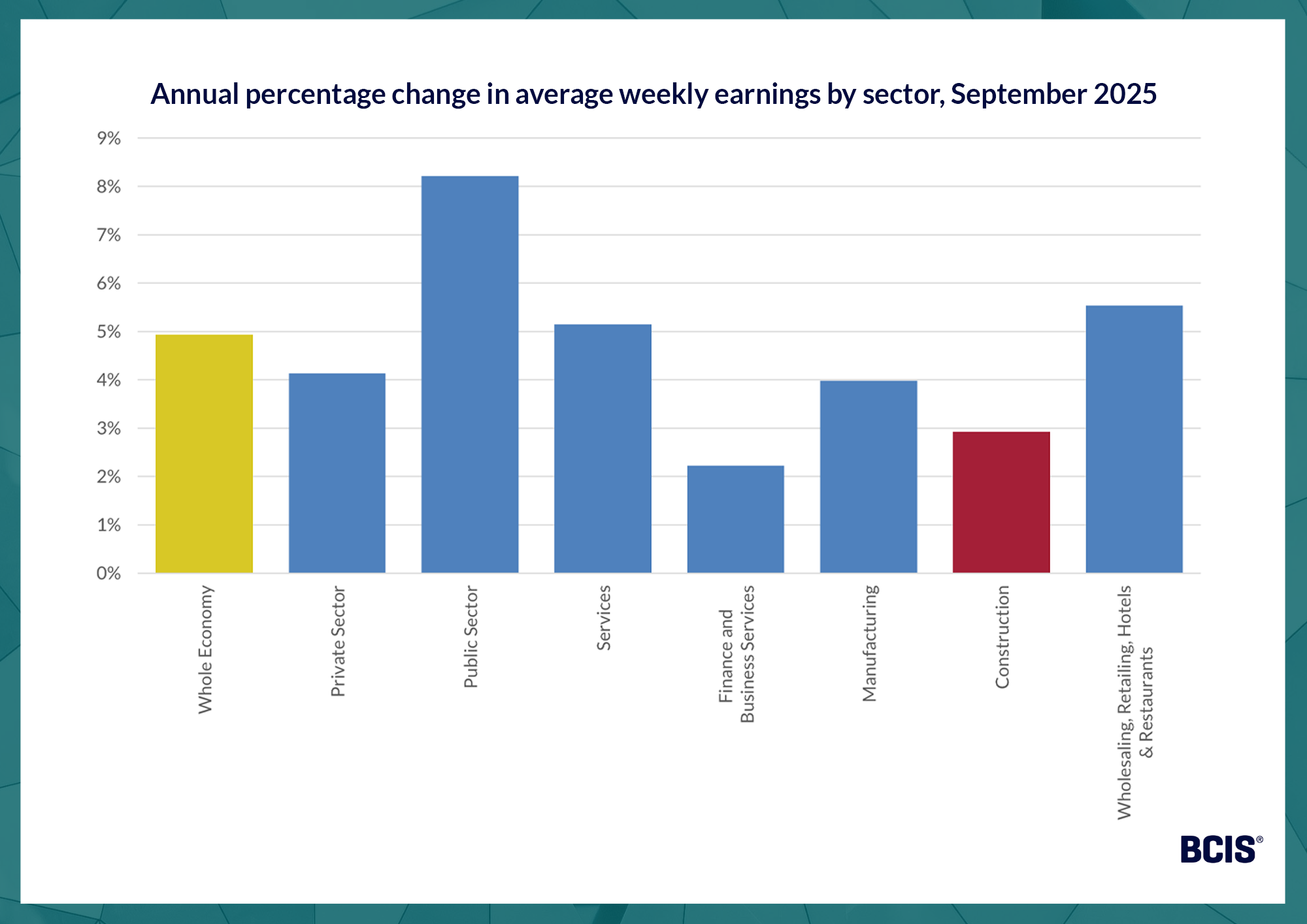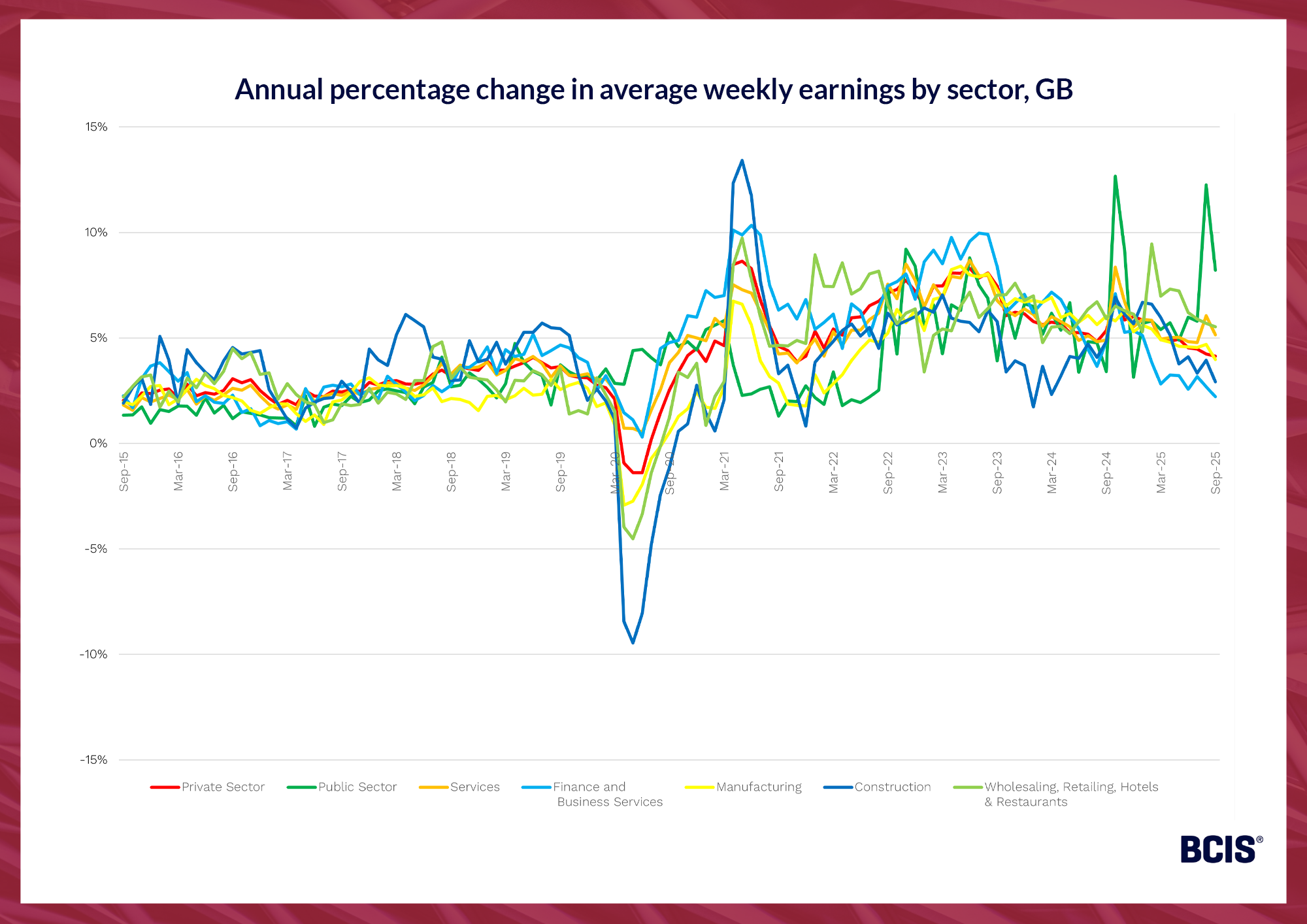The Building Cost Information Service (BCIS) is the leading provider of cost and carbon data to the UK built environment. Over 4,000 subscribing consultants, clients and contractors use BCIS products to control costs, manage budgets, mitigate risk and improve project performance.
Published: 13/11/2025
The Office for National Statistics (ONS) publishes monthly updates on average weekly earnings across the whole economy and by industry and sector in Great Britain. This commentary relates to ONS’s EARN02 and EARN03 datasets, which cover non-seasonally adjusted earnings, excluding bonuses and including arrears.
Note: ONS’s April 2025 update to earnings data included exceptional revisions dating back to October 2020, which have been reflected in our service and in the data below.
Construction earnings growth trails wider economy
Construction wages, as measured by index K5AH in the ONS’s Average Weekly Earnings dataset(1), increased by 2.9% in the year to September 2025. This was a decrease on the 4.0% rise seen in the 12 months to August 2025. On the month, there was a 0.3% increase in the construction industry’s average weekly earnings.
Across the whole economy, the average increase in earnings in the year to September 2025 was 5.0%, down from 5.8% in August according to index KA5H.
Dr David Crosthwaite, chief economist at BCIS, said: ‘Annual wage growth in construction is slowing significantly and is now well below the general rate of inflation. This data, combined with declining employment data, paints a picture of an industry with muted demand growth.
‘Together, this data is a warning signal for the government to introduce measures to stimulate both the construction sector and the wider economy in the upcoming Autumn Budget.’
Annual growth in earnings was lower in construction than the whole economy average for the fifth consecutive month in September 2025.
Source: ONS – Construction (K5AH) and Whole economy (KA5H), non-seasonally adjusted average weekly earnings, excluding bonuses, including arrears
Comparing pay at a sector level (with index K56S), construction workers saw the second lowest annual increase in average earnings across all sectors.
The greatest annual wage growth was recorded in the public sector with a 8.2% rise.
Source: ONS – EARN02: Non-seasonally adjusted Average Weekly Earnings, excluding bonuses, including arrears, at sector level
The ONS data show that the construction sector has experienced the most extreme fluctuations in earnings movement in recent years, from a 9.5% annual decrease in May 2020 to a 13.4% increase year-on-year in May 2021.
Source: ONS – EARN02: Non-seasonally adjusted Average Weekly Earnings, excluding bonuses, including arrears, at sector level
BCIS produces five-year forecasts of the Average Weekly Earnings construction (K5AH) and whole economy (KA5H) time series for subscribers of BCIS OpX.
To keep up to date with the latest industry news and insights from BCIS, register for our newsletter here.
(1) Office for National Statistics – Average weekly earnings in Great Britain: November 2025 - here



